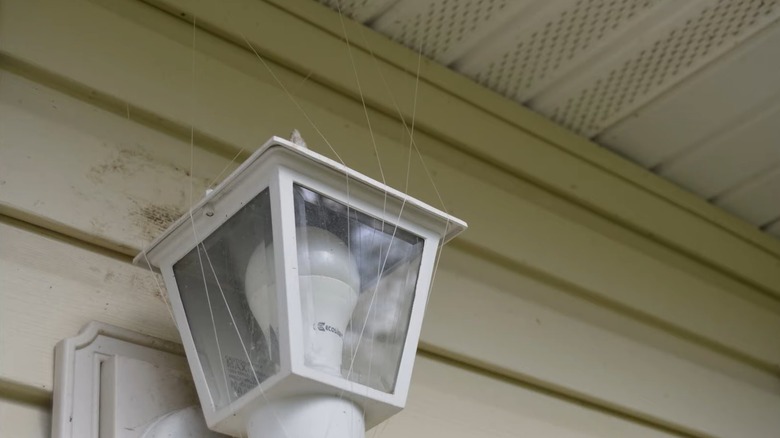The Almost Invisible Hack That'll Keep Birds From Nesting In Your Yard
Birds visiting our homes evoke a sense of harmony with nature. What is better than to have the company of tweeting friends while catching up with the news and sipping morning coffee? However, flocks of birds arriving as pests can quickly turn the once-pleasant song trills and chirps into a harrowing experience.
Not all species are particularly intrusive, but some birds you don't want to see in your yard, such as pigeons, starlings, sparrows, and crows, can disturb your environment, dirty your painstakingly maintained landscape, destroy gardens, and sometimes even cause severe property damage. There are several methods to keep birds from nesting on your property, but finding one that isn't an eyesore can be tricky. Surprisingly, hanging a fishing line is a discrete way to keep even the craftiest avian foes from sullying your space wherever birds build nests.
Running crisscrossed fishing lines above outdoor areas such as pools or light fixtures creates an obstruction that deters birds from landing, roosting, and leaving droppings behind. Monofilament lines are best suited as they are nearly invisible to the human eye and can withstand wind. However, ensuring they are adequately secured is imperative, as loose fishing lines can be harmful to a variety of wildlife.
Fool feathered foes with fishing line
Installing a fishing line barrier is relatively straightforward. Stretch taut lines in a zigzag pattern over potential bird nesting points like rooftops, light fixtures, and eaves. You can secure them to trees, pillars, pergolas, gazebos, and eaves. A gap of 4 to 8 inches between the lines usually works, but narrower gaps may be necessary for tiny, agile birds.
Naturally, the higher off the ground, the less conspicuous your anti-nesting arrangement will be. For flat roofs with no tall structures in the vicinity, rows of cinder blocks are a great temporary setup to hold the lines together. However, if you notice one has come free, retrieve it as quickly as possible.
Of course, not all fishing lines are created equal, and this is an application where it pays to opt for a relatively heavy-duty option, such as a 20-pound monofilament line. That said, the monofilament loses strength when contending with the sun's UV rays, so replacing it every so often is a good idea.

